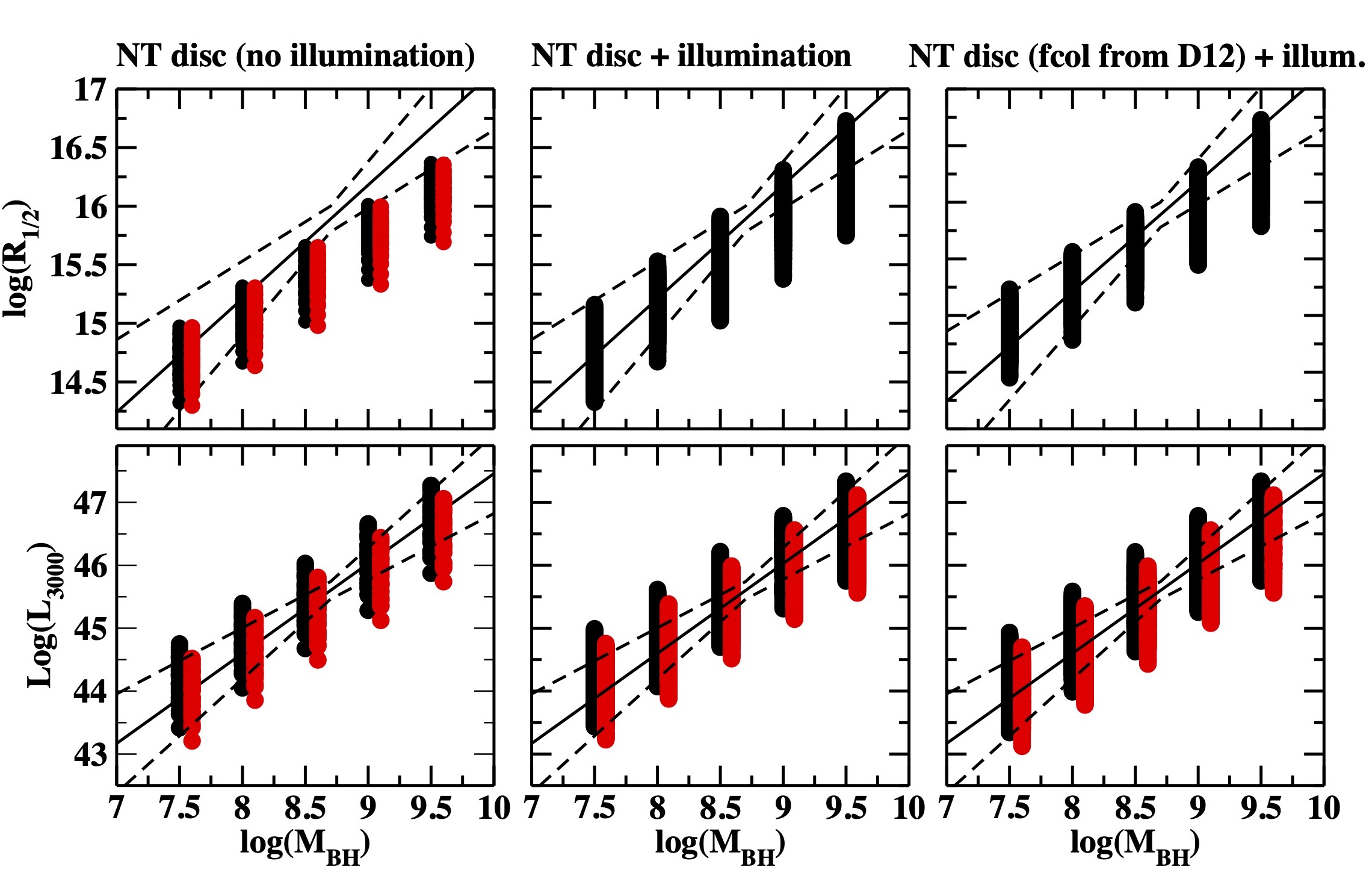The accretion disc size "problem" in Active Galaxies
Active Galactic Nuclei (AGN) are the most powerful, persistent objects in the Universe. They emit enormous amount of light (equivalent to the light emitted by all the stars in the galaxy) from regions which are not much larger than our Solar system.

We currently believe that all galaxies host supermassive black holes at their center. Their mass is up to billion times larger than the mass of our own Sun. In approximately 10 per cent of the nearby galaxies, gas is accreted to the central black hole. Through this process, gravitational power is released and heats the gas, which then emits the vast amount of light that we observe at almost all wavelengths from these objects. The gas forms a disc, which is very small in size and cannot be resolved by any telescope on Earth. We are therefore forced to test our theories of AGN via other means. One of the most imaginative, and powerful, way to study the size of the accretion discs in these objects is through variability observations of gravitationally lensed quasars.
Being so luminous, AGN can be detected at very large distances from Earth (in fact, the most distant objects detected by the most powerful telescopes are all AGN, or quasars, as we often call the most luminous of them). In some cases, the distant quasar's light can be altered by a massive foreground galaxy along the light path. The foreground galaxy's powerful gravity can warp and magnify the quasar's light, producing multiple quasar images. It is possible that light from the individual lensed images of the background quasar can be re-magnified by a star in the foreground galaxy, as it moves over the quasar's accretion disc. As a result, study of the "microlensing" variations in these systems can be used to (literally) measure the size of the accretion disc in these distant quasars.

However, microlensing variability studies over the last 10 years have shown that the accretion disc in quasars appeared to be significantly larger than the theoretical predictions. This discrepancy is one of the most serious problems regarding our understanding of the power mechanism in AGN.
Recently, Prof. Iossif Papadakis and his collaborators studied the theoretical disc size in the case when the accretion disc is illuminated by an X-ray source using a theoretical model that they developed the last few years. They considered general relativistic effects, correct treatment of the X-ray absorption/reflection from the accretion disc, and various inclinations, and they computed the model accretion disc size in thousand systems. They found that the disc size can be up to ∼ 3.5 times greater than the radius of a standard disc, even for a non-spinning black hole, based on a wide range of model parameters – as long as a significant part (at east 40-50 per cent) of the total accretion power is transferred to the corona and the height of the X-ray source above the black hole is greater than ∼ 20 Schwarzschild radii.
The idea of the X-ray disc illumination was proposed many years ago to explain various features that are commonly observed in the X-ray spectra of AGN. Recently, Prof. Papadakis and his collaborators, showed that X-ray illumination of the accretion disc can also explain the observed UV/optical time-lags in AGN. The fact that the same model can also account for the quasar micro-lensing disc size "problem" strongly supports the hypothesis of the disc X-ray illumination in AGN.
Article: "X-ray illuminated accretion discs and quasar microlensing disc sizes", Papadakis, I. E., Dovčiak, M. & Kammoun, E. S., 2022, A&A , 666, 11
